

5 film techniques J.J. Abrams will use to showcase his Star Wars universe. One of the great pleasures of the new Star Wars: The Force Awakens trailer is seeing a new director inject his own flourishes into an already visually distinctive series.
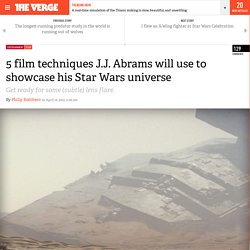
The Star Wars visual catalog has a few staples that have stayed consistent throughout the series: think transitional wipes and pilot POV shots. Unfortunately, the prequels saw George Lucas expand the toolset with a lot of uninspired tricks: slow zooms on wide shots, Barbara Walters glow, and a stubborn use of a locked-down camera.
From the looks of the new Star Wars trailer, J.J. Abrams and his cinematographer, Dave Mindel, seem to be trading out the bad visual trademarks and replacing them with some of their own. Here are some examples of what we might be able to expect from Abrams’ visual take on the galaxy. The Dolly Shot It’s a pretty basic camera move. So in this shot, you have the camera moving toward R2-D2 and embers flying from left to right. Lens Flares Wait, what? It’s been exhaustively noted that J.J. Snap Zoom. Cinematic Terms - A FilmMaking Glossary. Camera shots, angles and movement, lighting, cinematography and mise en scene, Film overview, Skills by text type: film, English Skills Year 9, NSW.
Film Techniques Film techniques is the term used to describe the ways that meaning is created in film.

Camera Shots A camera shot is the amount of space that is seen in one shot or frame. Camera shots are used to demonstrate different aspects of a film's setting, characters and themes. As a result, camera shots are very important in shaping meaning in a film. An extreme long shot (animation on right) contains a large amount of landscape. A long shot (animation on right) contains landscape but gives the viewer a more specific idea of setting. 11 Essential Camera Techniques in Filmmaking - With Animated Images. Following my filmmaking tips and my post on how to direct, this post will look at some nitty-gritty film techniques that every filmmaker needs to have in the toolbox.
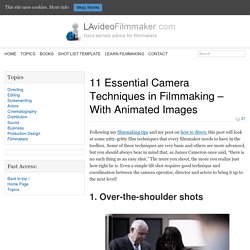
Some of these techniques are very basic and others are more advanced, but you should always bear in mind that, as James Cameron once said, “there is no such thing as an easy shot.” The more you shoot, the more you realize just how right he is. Even a simple tilt shot requires good technique and coordination between the camera operator, director and actors to bring it up to the next level! 1. Over-the-shoulder shots (Over-the-shoulder shot example taken from a TV spot I directed.) The King's Speech. It could have been a bunch of pip-pip, stiff-upper-lip Brit blather about a stuttering king who learns to stop worrying and love the microphone.
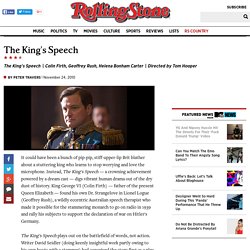
Instead, The King's Speech — a crowning achievement powered by a dream cast — digs vibrant human drama out of the dry dust of history. King George VI (Colin Firth) — father of the present Queen Elizabeth — found his own Dr. Strangelove in Lionel Logue (Geoffrey Rush), a wildly eccentric Australian speech therapist who made it possible for the stammering monarch to go on radio in 1939 and rally his subjects to support the declaration of war on Hitler's Germany.
The King's Speech plays out on the battlefield of words, not action. The King's Speech, review. The tension between them is at least as much temperamental as it is cultural or economic.
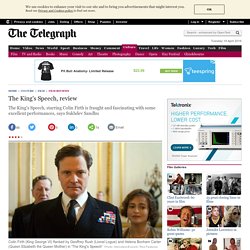
Logue prizes informality. He calls Albert “Bertie”, begins one of their sessions by asking him if he knows any jokes, insists – rather boldly – “In here, it’s better if we’re equals.” READ: The King's Speech - the real story. Review of the King's Speech. Reviewed by John M.
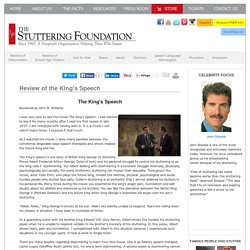
Williams I was very slow to see the movie The King's Speech. The King's Speech Movie Review (2010) "The King's Speech" tells the story of a man compelled to speak to the world with a stammer.

It must be painful enough for one who stammers to speak to another person. To face a radio microphone and know the British Empire is listening must be terrifying. At the time of the speech mentioned in this title, a quarter of the Earth's population was in the Empire, and of course much of North America, Europe, Africa and Asia would be listening — and with particular attention, Germany. The king was George VI. The year was 1939. In "The King's Speech," director Tom Hooper opens on Albert (Colin Firth), attempting to open the British Empire Exhibition in 1925. At that 1925 speech, we see Bertie's wife, Elizabeth (Helena Bonham Carter), her face filled with sympathy. Logue doesn't realize at first who is consulting him. If the British monarchy is good for nothing else, it's superb at producing the subjects of films.
Director Tom Hooper makes an interesting decision with his sets and visuals.